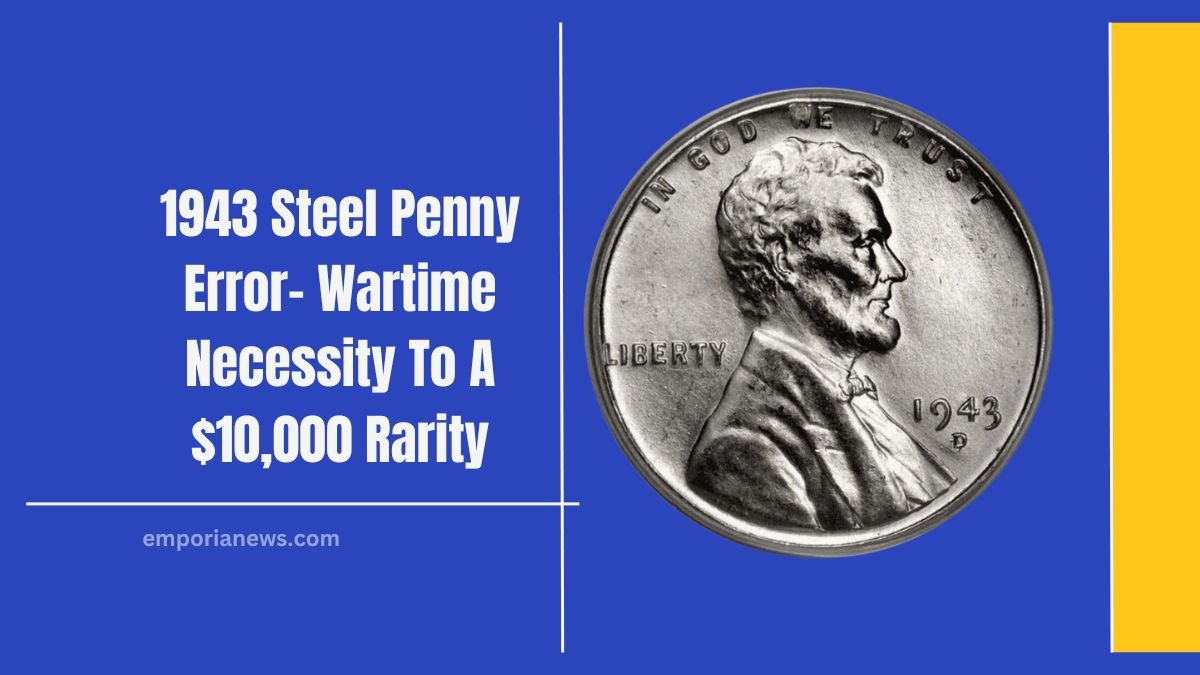During World War II, the United States faced a significant copper shortage as the metal was essential for military applications.
To conserve copper, the U.S. Mint altered the composition of the Lincoln cent in 1943, resulting in the creation of the 1943 steel penny.
While this change addressed wartime needs, it also led to unintended minting errors that have since become highly valuable to collectors.
The Transition to Steel Cents
In 1943, to save copper for the war effort, the U.S. Mint produced pennies using zinc-coated steel instead of the traditional copper-based alloy.
This new composition gave the pennies a distinctive silver-like appearance. However, the transition wasn’t flawless.
Some bronze planchets (the metal discs used for coin production) from previous years remained in the minting presses, leading to the accidental production of 1943 bronze pennies. These rare errors are among the most coveted coins in American numismatics.
Notable 1943 Penny Errors
Several notable errors from 1943 have captured the attention of collectors:
- 1943 Bronze Penny: As mentioned, a few bronze planchets were mistakenly used, resulting in bronze pennies dated 1943. These are extremely rare and valuable.
- 1943-D Doubled Die Obverse (DDO): This error occurs when the coin’s design is doubled during the minting process, leading to noticeable duplications, especially in the inscriptions.
- Off-Center Strikes: Some 1943 steel pennies were struck off-center due to misaligned planchets during production.
Factors Influencing Value
The value of a 1943 steel penny varies based on several factors:
- Mint Mark: Indicates the minting location. For instance, pennies from Denver bear a “D,” while those from San Francisco have an “S.”
- Condition: Coins are graded on a scale from Good (G-4) to Mint State (MS-65). Higher-grade coins are more valuable.
- Errors: Unique minting errors can significantly increase a coin’s value.
1943 Steel Penny Value Chart
| Mint Mark | Good (G-4) | Fine (F-12) | Extremely Fine (EF-40) | About Uncirculated (AU-50) | Mint State (MS-60) | Mint State (MS-65) |
|---|---|---|---|---|---|---|
| None | $0.17 | $0.33 | $0.45 | $0.56 | $2.81 | $9.13 |
| D | $0.22 | $0.39 | $0.50 | $0.85 | $3.30 | $11.00 |
| S | $0.28 | $0.45 | $0.85 | $1.13 | $6.65 | $23.00 |
Values are approximate and can vary based on market demand.
Record-Breaking Sales
The allure of the 1943 steel penny, especially those with errors, has led to impressive auction results. For example, a 1943-D bronze penny fetched $840,000 at auction, highlighting the coin’s rarity and desirability among collectors.
Identifying Authentic 1943 Steel Pennies
To determine if a 1943 penny is authentic:
- Magnetic Test: Genuine steel pennies are magnetic due to their composition. If a 1943 penny doesn’t stick to a magnet, it might be a rare bronze error.
- Weight: Authentic steel pennies weigh approximately 2.7 grams, while bronze versions weigh about 3.11 grams.
The 1943 steel penny stands as a testament to a unique period in U.S. history. While many of these coins are common, certain errors have transformed them into valuable collectibles.
Whether you’re a seasoned numismatist or a curious beginner, the 1943 steel penny offers a fascinating glimpse into the intersection of history, economics, and the art of coinage.
FAQs
Why were 1943 pennies made of steel?
Due to a copper shortage during World War II, the U.S. Mint used zinc-coated steel for pennies to conserve copper for military needs.
How can I tell if my 1943 penny is valuable?
Check for errors like the bronze composition or doubling in the design. Additionally, assess the coin’s condition and look for mint marks.
Are all 1943 steel pennies rare?
While standard 1943 steel pennies are common, those with errors, especially bronze planchets, are extremely rare and valuable.




